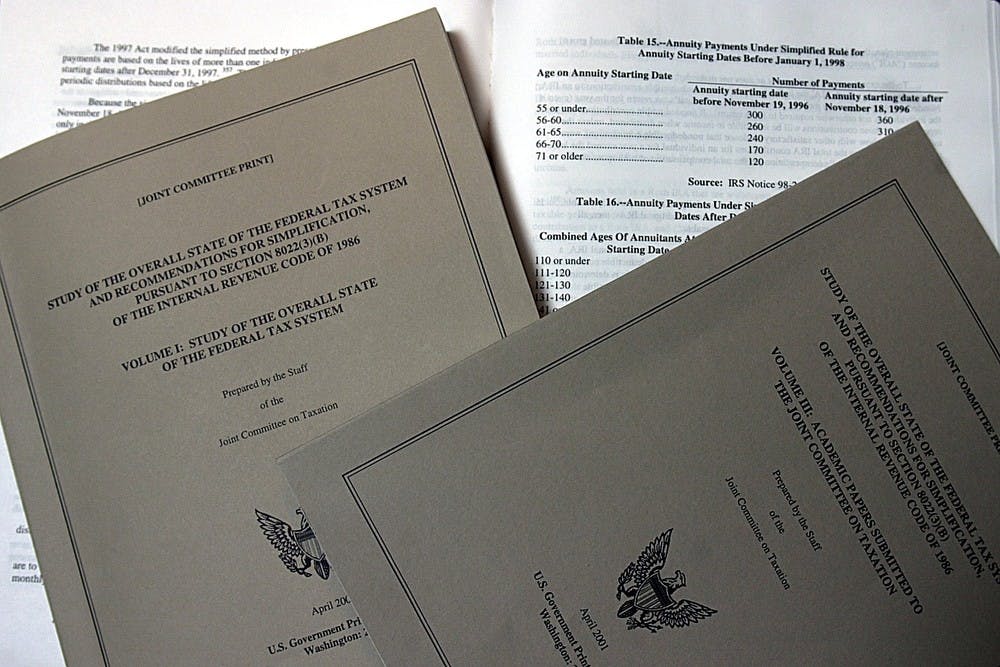A New America study has found that undergraduate college students are not able to claim as many federal tax credits on their tuition as they were promised under a 2012 tax credit revision.
The American Opportunity Tax Credit was altered in 2012 and extended through 2017 as a measure to give low-income students a path into a college education.
Kim Dancy, a political analyst for New America, authored the study and found the AOTC is not as effective as it could be due to complicated IRS regulations.
The credit is supposed to give a break of up to $2,500 per year to students with an annual household income of $80,000 or less. Undergraduate students are the only ones who qualify for the credit, but many are having issues claiming it.
“I think one of the most surprising findings was the share of undergraduates who aren’t able to claim tax credits,” Dancy said.
Students are not always able to claim the credit if they are receiving other forms of federal aid, even though they are the same students it was created to help, Dancy said.
If a student’s tuition is $10,000 per year, for example, and the student receives a Pell grant of $6,000, the government sees their net tuition as $4,000.
Students in such a position are not able to claim the tax credit because they are already receiving a considerable amount of federal aid.
However, students can choose to claim taxes on their grants and other forms of federal aid. This takes away a portion of the money, but then gives them freedom to claim the AOTC.
The process for a student to receive their federal aid and claim the AOTC is a long, complicated ordeal, albeit completely legal. Many students simply do not know the process exists, Dancy said.
“Hopefully that can lead to any sort of streamlining or simplification of the process on the part of policymakers,” she said.
The IRS is responsible for disbursing the AOTC, and designed the credit to give students financial relief while earning their degree.
IRS Spokesman Bill Brunson said the credit can help students cut costs.
"It's a considerable value ... to someone who's in their first four years of college," Brunson said. "It can put money in their pocket, it can cut expenses they have for college."
Brunson said students should take time to research the credit and see if they qualify.
According to IRS documents, Arizona college students filed more than 10 million returns to claim the AOTC in 2013, adding up to more than $9 billion in returns.
"The bottom line is, it's well worth the time for an individual to find out if they qualify for the return," Brunson said.
Transborder and Latino studies senior Jesse Docherty is the treasurer for El Concilio at ASU, which unites Latino student organizations at the University. He said university costs are a challenge for many students attending college, even with tax credits.
Docherty said costs of college are particularly taxing on students who come from a low-income family.
Docherty is a first-generation college student, and said minority students face many issues coming from low-income families.
He said first-generation college students face great financial restraints because cost is usually what prevented the rest of their family from attending college.
Docherty said being a first-generation college student is as tangible of an issue as cost, because there is not a support system at home that understands what it is like to go through college.
"They make it to college, but they still don't have that support system," Docherty said. "Who do you turn to when you have questions about how to navigate the college system?"
He said he sees the University making an effort to provide on-campus support systems for first-generation students, but hopes to see that grow in the future.
"I know ASU is trying to work harder to change that," Docherty said. "But I would like to see more focus on first-generation students."
Financial burdens and an absent support system are not the only roadblocks with which students are confronted. Standardized test scores can pose problems as well.
Incoming ASU students are required to have completed high school-level courses with a 2.0 GPA, earned specific scores on standardized tests such as the SAT and ACT or transfer credits from another college.
In colleges that use SAT scores to determine which students they should accept, white students are placed at an advantage because of their higher scores, according to the National Center for Educational Statistics.
A new study from the University of California, Berkeley suggests colleges should take race into higher consideration, because minorities are often outperformed by whites, when it comes to college admissions.
Race, family educational levels and income are all determining factors in a student’s SAT scores, according to the study.
The study suggests affirmative action as a possible measure on the part of universities to help minority students who did not perform well on the SAT.
However, Arizona law prohibited race-based affirmative action in 2010. Voters passed an amendment to the state constitution which deemed affirmative action reverse discrimination.
Instead, minority scholarships can be offered as a way to help minority students. ASU said in a statement that scholarships are offered regardless of race.
“ASU offers a number of different scholarships and a range of scholarship opportunities. Scholarships are not only awarded for academic excellence, but also based on personal stories, background or degree program,” the statement read.
Although the school said it does not show preference when doling out scholarship money, donors have the opportunity to direct where their money goes.
“Many scholarship donors chose to offer private support specifically for a research topic, student service or scholarship program," the statement read. "These scholarships help ASU fulfill a promise to qualified students, regardless of circumstance or socioeconomic background, that they have the opportunity to earn a college degree."
Related Links:
No easy answers on tax credits
Tax cuts extend educational opportunity
Reach the reporter at jwbowlin@asu.edu or follow @mrjoshuabowling on Twitter.
Like The State Press on Facebook and follow @statepress on Twitter.




